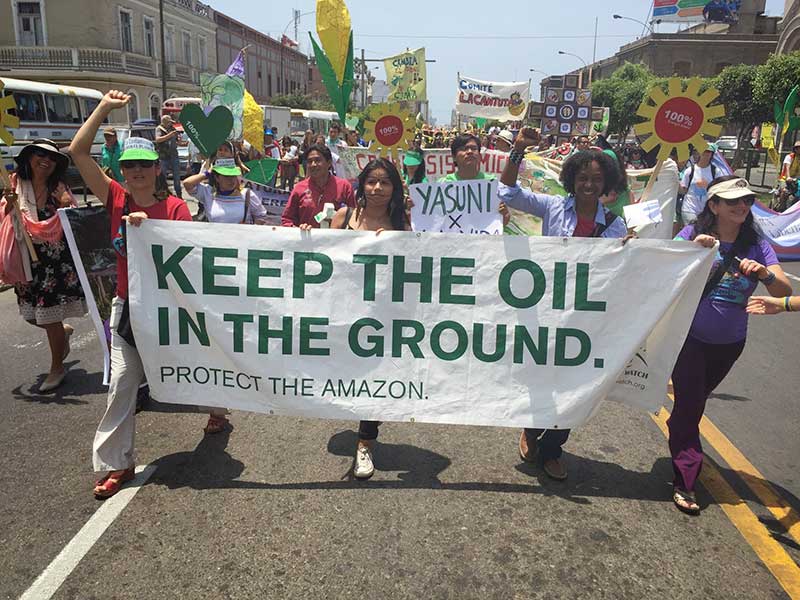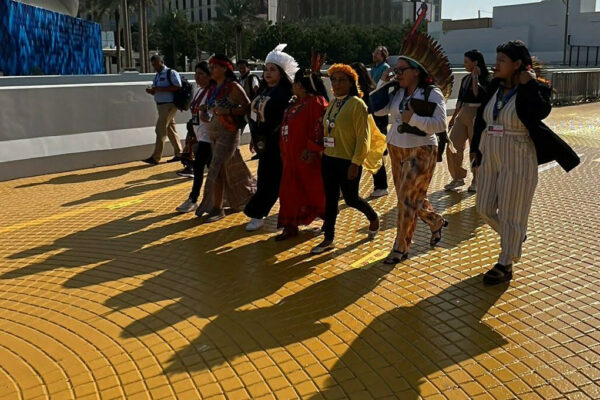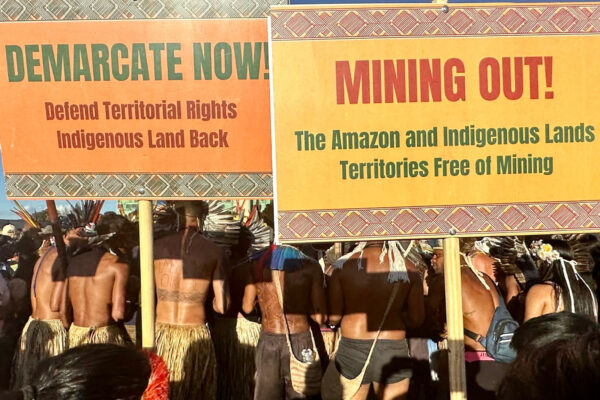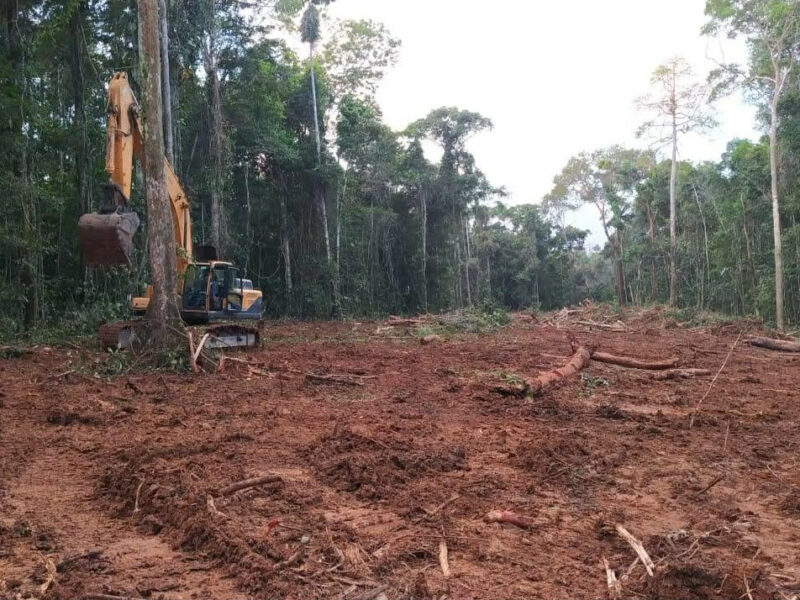
Excerpted from Amazon in Focus
In the remote cloud forest of northeastern Colombia, the elders of the indigenous U’wa were hard at work. Threatened by Occidental Petroleum’s (Oxy) plans to drill in their sacred territory, there was one obvious solution – hide the oil.
For months, shrouded in clouds, warmed by fire, and fueled by song and coca leaves, they “worked” in the spirit world to move the underground oil reserves away from Oxy’s exploratory wells.
Despite extensive geologic data that showed massive amounts of crude underneath U’wa land, Oxy never found the oil. The company drilled four wells.
The U’wa cosmovision tells of a great imbalance in the world if resource extraction continues unabated. Their vision doesn’t simply refer to the contamination fossil fuel extraction brings, but rather a profound shift in the interconnectedness of our ecosystem necessary for sustaining life on earth.
Indigenous peoples have long warned of the perils of resource extraction. But as Patricia Gualinga of the Kichwa community of Sarayaku in Ecuador explains, “it’s only now that scientists are confirming what our medicine people have been saying for millennia.”
That science is unequivocal – fossil fuels must stay in the ground. In fact, roughly two-thirds of all proven reserves need to remain permanently in the ground to avoid the two-degree Celsius rise in temperature that will create catastrophic climate chaos.
Why then, are companies scouring the Arctic circle, the Dakota plains, and remote Amazonian rainforest looking for unburnable oil that can’t be used if we hope to keep the planet habitable?
Who gets to extract their oil and who must keep theirs in the ground? Among the world’s leading emitters of greenhouse gases – those who bear the historic responsibility for climate change are known as Annex One countries – climate promises are belied by energy policies that continue to open new areas for drilling, totally divorced from climate safe policy.
Does the developing world have a “right” to follow in the polluting footsteps of Annex One countries? Or can they leap-frog to the new era of renewable energy sovereignty which will also remove their economies from the boom and bust cycle of commodity dependence?
One path, outlined by Nature, argues that the market will dictate which oil, gas, and coal gets used first, and that the biggest reserves should remain in the ground. But that ignores other factors equally important to meeting our collective carbon budget, including critical criteria such as biodiversity and human rights.
What becomes of places like the Amazon Basin that don’t have major oil reserves, but are vital for the regulation of the earth’s climate, house 20% of the planet’s fresh water, and one in ten of the world’s known species?
In the debate over where to keep oil in the ground, the Amazon is a critical place to start. Millions of years ago, before the uplift of the Andes, the Amazon river flowed west and emptied into the Pacific Ocean, depositing detritus and microorganisms along the way that became oil deposits throughout what is now the western shield of the Amazon in modern day Colombia, Ecuador, and Peru. Places like Ecuador’s Amazon, characterized by mountainous microclimates, never fully froze during the Pleistocene age, and hence today have some of the highest rates of biodiversity and endemic species in the world.
Oil extraction in regions like the sacred headwaters of the Amazon is a triple threat for the climate. Besides the actual CO2 emissions from burning crude, oil extraction and its related infrastructure is a major driver of deforestation. Forests are cleared for roads and pipelines, opening new access arteries for agro-industrial activity and colonization. Additionally, emissions from fallen forests are a major contributor to greenhouse gases. Lastly, with tree loss we lose the forest’s natural ability to absorb CO2 exactly when we need it most.
It is hard to untangle our fossil fuel dependence from capitalism, and as Naomi Klein has so eloquently argued, we need to deal with one in order to deal with the other. We can’t have an unlimited infinite economic system based on finite natural resources.
What’s the solution? We must move past trying to mitigate our way to climate sustainability by regulating emissions from the tailpipe or smokestack. We need a supply side strategy that starts at the wellhead. The discussion cannot be solely about emissions. Indigenous rights, human rights, rights of nature and biodiversity must be taken into account when prioritizing criteria for keeping fossil fuels in the ground.
There is no road map to solving perhaps the hardest and most important question of our time. But leading up to the COP21 climate summit in Paris, we are advocating important ideas from our partners like Annex Zero – a UNFCCC sponsored category for communities and countries to go entirely carbon free. And Sumak Kawsay, or living forest, a concept which Sarayaku proposes that creates a new category for community protected forests recognizing the relationship between plants, animals, and spirits.
The U’wa werjayas can’t hide all the fossil fuels in the world. Now it’s time to follow in their footsteps and protect our home planet together.













